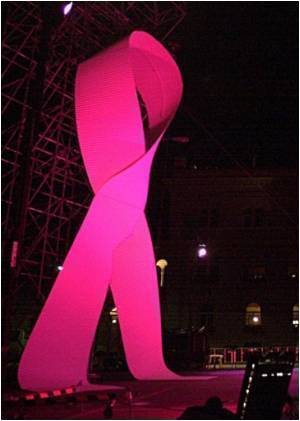New research has said that a gene mutation can dramatically increase the risk of blood clots in women undergoing breast cancer therapy.

Tamoxifen is a widely-used breast cancer treatment after surgery for pre and post menopausal patients with hormone receptor-positive breast cancer.
One of the most serious complications of tamoxifen usage is the development of blood clots, or thromboembolic events (TEs).
Previous studies have shown that use of tamoxifen increases the risk of TEs in healthy women twofold, and that in women aged 50 and above, it is associated with even greater risk.
The genetic mutation Factor V Leiden (FVL) is the most common inherited clotting factor mutation and also causes increased thrombosis risk.
To determine if having the Factor V Leiden genetic mutation increases the risk of thromboembolisms among women taking tamoxifen, Judy E. Garber, of the Dana-Farber Cancer Institute, and colleagues at the National Cancer Institute's Cancer and Leukemia Group B (CALGB) looked at 412 women who received the drug as adjuvant treatment for stage I, II, or IIIA breast cancer, between January 1999 and April 2005.
Advertisement
The researchers found that women who had experienced a thromboembolism while taking tamoxifen were nearly five times more likely to carry the FVL mutation compared with the women who did not develop a thromboembolism.
Advertisement
The researchers concluded that the presence of breast cancer may influence the occurrence of TEs among patients taking tamoxifen. Chemotherapy is also thought to increase the risk of TEs by decreasing coagulation inhibitors and damaging vascular endothelium.
However, even though half the women in this study had also received chemotherapy, the study showed no statistically significant difference in chemotherapy exposure between the women who developed TEs and those who did not.
So chemotherapy, the researchers concluded, was unlikely to explain the prevalence of the FVL mutation among women with TEs in this study. The risk of TE was also associated with smoking and family and personal history of TEs.
The researchers also concluded that: "These data may prove useful to women who must decide between tamoxifen and an effective, essentially non-thrombogenic, alternative adjuvant therapy for breast cancer, such as aromatase inhibitors for postmenopausal women and gonadotropin-releasing hormone analogs or oophorectomy for premenopausal women."
According to the authors, the study's limitations include lack of family history data on TE and other hereditary factors leading to coagulopathies. The researchers also did not collect data on other potential TE risk factors, such as body mass index and recent surgery.
The study has been published June 16 in The Journal of the National Cancer Institute.
Source-ANI














